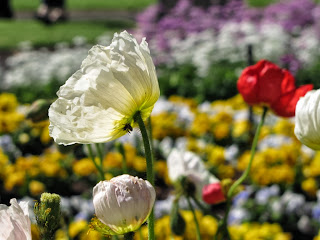Its a holiday weekend in Brisbane, but we are marooned! For two reasons - our garage roller-door broke and so I don't want to open it again in case it won't shut, but also because of the incessant wind and rain. We moved to Brisbane post-2011, so didn't experience those terrible floods, but right now we are getting a taste of what that was like. Combined with the recent
King tides, the Queensland coast is taking a battering.
I was really sorry to hear on Saturday how hard the
Tropical Cyclone Oswald had hit Bargara and Burnett Heads near Bundaberg: we spent last New Year at Burnett Heads and had an incredible experience watching turtles nesting at
Mon Repos: the largest Loggerhead turtle rookery in the South Pacific. Flatback and Green turtles also lay their eggs there. Mon Repos is situated between Burnett Heads and Bargara. Thinking about those wonderful creatures struggling out to sea in such storms, I realised I never posted on this blog about that trip. January is right in the middle of the turtle breeding season (Nov-March), where female sea turtles will be coming onto the beach to lay their eggs at Mon Repos and also baby turtles will be starting to hatch and make their perilous journey to the sea, certainly even more perilous in this weather.
Last year we were really lucky and saw several female
Loggerhead turtles come up the beach that night to lay their eggs. It was amazing to watch such an enormous creature so close, apparently oblivious to 30 people stood around in the darkness (torch use was restricted). She dug a hole in the sand and then began to lay 120 eggs, one after the other. After she had finished she buried the eggs then made her way back to the ocean. Some interesting facts about the turtles at Mon Repos:
- The eggs laid on the mainland produce mainly females and those laid on islands produce males - to do with the warmer temperature of the sand on the mainland.
- Only 1 in 1,000 hatchlings will survive to maturity.
- It is 30 years before the turtles will return, to the same beach, and start to breed. The longevity of the turtles is not yet known!
We were able to get very close but had to stay behind the turtle as she laid her eggs
After laying her eggs the turtle buries them (and almost herself!) in sand
Researchers take some measurements and mark the position of the eggs.
Sometimes, the turtles lay their eggs too low on the beach, so that they are in danger of being washed away by high tides. To help conserve this endangered species, researchers and volunteers dig up the eggs after the turtle has gone back to the ocean and literally move them further up the beach. Research has shown that if this is done within a short timeframe it doesn't affect the hatchling survival rate. The turtle we were watching laid her eggs too low on the beach, and so we also helped with the egg relocation - I was thrilled to hold some turtle eggs as we all helped move the eggs as quickly and carefully as we could.
Eggs after they are dug up and counted, ready to be buried again further up the beach
I hope the little turtles that I helped will be the 1 in 1000 that make it!
A sand sculpture Edd made at Mon Repos beach the next day, in memory of the beautiful turtles we saw. Edd has also done a couple of very cute illustrations of some other wildlife blown about in the Australia Day storms
on his blog.














































